Tarani demonstrates thumb into attacker’s eye while parrying his knife arm.
While a firearm may be considered the most effective tool for personal self-defense, there are times and places where firearms are not an option. This may be due to local laws, your local status, or problems with your firearm.
Recognizing this, firearms instructors Darryl Bolke and Wayne Dobbs of Hardwired Tactical Shooting (FIRST RESPONDER: Hardwired Tactical Shooting Pistol Class, May 2013 S.W.A.T.) have formed alliances with top instructors in other disciplines. Among them, Steve Tarani stands out.
Table of Contents
STEVE TARANI
Steve Tarani has been teaching the defensive use of the knife for over two decades. He has taught at Gunsite and SIG Academy and provided training to numerous government entities in the military and law enforcement realms. He holds instructorships in multiple martial arts systems that emphasize bladed weapons, including several from Indonesia, Malaysia, and the Philippines.
Steve’s teaching extends beyond bladed and stick weapons and includes extensive experience with firearms, defensive tactics, and protective measures. He also brings his real-life experience to the table from working in law enforcement and for government agencies.
Creating distance with pistol against knife.
While he is a lifelong student of martial arts, Tarani recognized that many of the people he was teaching needed tools and tactics that work right away without extensive training, and thus he developed many programs of instruction suitable for short-duration courses. He strives to make his seminars self-contained and to allow you to use what you have learned upon leaving.
As such, the class that this article profiles was not one that bombarded students with techniques, but instead guided them to find things that work best for them. He pointed out that many things that work for him only do so because of his decades of training.
Seeing him demonstrate techniques brought to mind many descriptions that have become clichéd in the martial arts about “snakelike strikes” and “catlike agility.”
But in Tarani’s case, these descriptions are valid. Seeing a 6’3” man change levels in a flash, drop into a crouch on the move, and cut a lowline target was impressive.
Jamming drawn knife.
DEFENSIVE KNIFE USE
This edged weapons class that Steve taught was not a knife fighting or martial arts class, but one geared toward personal protection with the use of a knife and against both armed and unarmed attackers. The class was defensive in nature—whether it was defense against an edged weapon or using an edged weapon as a last-ditch defense against violent attack.
The seminar took place at Tiger’s Den CrossFit in Dallas, Texas—a spacious, well-equipped facility. Attendees came not only from Texas, but from all over the U.S., with a fair representation from the Mil and LE sectors.
Moving offline and drawing gun.
To start the class off, Tarani had two students try to cut each other for 30 seconds using foam training knives with chalk applied to their edges. The object of this demonstration was to illustrate that even in the short time the two went at it, both received multiple chalk marks representing cuts and stabs.
The knife is an especially dangerous weapon because of its prevalence, simplicity of use, and because most conversations take place inside of or just beyond contact distance—the range at which the knife is effective.
Steve pointed out that even though a knife is a contact weapon, just because someone isn’t within touching distance does not mean they are not a threat. Tarani cited Dennis Tueller’s studies showing that the average person can cover 21 feet—or more—in less than two seconds.
Students spar with chalk-covered foam training knives.
GETTING PHYSICAL
Steve began the physical portion by covering the principles of slashes, thrusts, and targets, with the class following along using blunt edgeless training knives that he provided. Tarani introduced simple slashes and combinations of slashes to keep a person away from you.
Tarani covered drawing the knife by relating it to drawing a sidearm. Since everyone brought a non-firing replica handgun as instructed, we began drawstroke training with Blue Guns before transitioning to training knives. We did quite a bit of work with Blue Guns and drawstrokes over the two days of the class, with emphasis on close-range applications.
Whether armed with a handgun or a knife, Steve emphasized getting off the line of attack. To do this, he had us incorporate a step back at a 45-degree angle into both gun and knife drawstrokes.
Tarani diverts knife arm while ramming his fingers into attacker’s eyes.
HITS instructor Darryl Bolke pointed out the importance of assuming at least a ready position as soon as a legitimate threat manifests itself. Steve added that what might begin as aggressive panhandling can turn into robbery or assault very quickly, depending if the perpetrator perceives you as an easy mark.
Using the training guns, we did partner drills where our partner used a training knife, Blue Gun or something non-threatening at non-contact range.
When introducing these drills, Steve advised that the key to spotting a knife draw was keeping an eye on the threat’s pre-attack shoulder movement necessary to get the knife into play. He had people draw at closer distances until they reached the point where they could not go for their gun. For situations like this, Steve taught empty-handed defense—a two-handed slam into the knife arm, followed by one hand trapping or controlling the attacker’s arm while the other hand finger-strikes the attacker’s eyes or throat.
Various Karambits with dull trainer at bottom.
FOLDING KNIVES
After a few hours of imparting the basics with fixed training blades, we transitioned to folding training knives.
Steve explained that though the folder is inferior to the fixed blade, it is also more convenient, concealable, and legal in places where fixed blades are not. He went over the pros and cons of different styles of folding knives, as well as examining different modes of carry.
Steve compared drawing the knife to a four-count drawstroke for a handgun. Doing so enabled him to go over fine points that people otherwise might overlook. Getting a knife into play is half the battle, and a significant amount of time was spent practicing one-handed opening of the knives in a variety of positions. Once the students had gotten in some practice, he went from person to person timing their drawstrokes.
The class cycled rapidly through a variety of drills. By Training Day 2, students were more comfortable and fluid in their movements. Steve constantly asked for students’ observations and built on what they said.
Vertical displacement and knife employment from struggle.
THE KARAMBIT
Also on TD2, Steve introduced us to the Karambit—a curved knife that originated in Indonesia. Karambits come in both single- and double-edged varieties. When held blade down in an icepick-style grip, the talon-like blade projects outward from the bottom of the fist. A natural punching motion allows it to rip viciously.
The knife’s grip also features a large ring at the end that accommodates the trigger finger when held in a reverse grip. In a maneuver unique to the Karambit, this allows the knife to be held by the ring while whipped out from the icepick grip to travel over the top of the hand and deliver a sickle-like cut from an extended position.
Though Karambit blades are typically only a few inches long, the curved nature of the blade, along with the unique way of employing it, allows it to make several quick, ferocious cuts per motion. The curve of the Karambit’s blade can also be used to hook the limbs of the person it is being employed against.
Whipping cut at extension with dulled training Karambit.
The Karambit is definitely a special-purpose tool—one that Steve played a major role in popularizing in the U.S. He is responsible for mainstreaming the practical use of the Karambit in military and LE communities.
It’s available in fixed blade and folding versions, and Steve had training versions of each on hand to supply every member of the class. We practiced drawing and opening the folding training Karambits, along with making simulated cuts on our partners with the blunt blades.
Given the manipulations and manner in which it is often employed, the Karambit has a great deal of potential for self-injury. If you are considering a Karambit, you absolutely need to buy a dull training version to practice with until you can manipulate the knife without making accidental contact with yourself.
Ideally, you should seek out qualified instruction with this unique bladed weapon. You don’t want to be one of “those guys” who show up on YouTube with stories of self-inflicted wounds.
Whipping cut with dulled Karambit in extended position against person holding Karambit in normal grip.
LEGAL USE OF FORCE
The course went far beyond knife use and physical skills. It also covered legalities and recognizing criminal behavior at the earliest stages before an attack.
HITS instructors Wayne Dobbs and Darryl Bolke chimed in and emphasized avoidance, citing John Farnam’s maxim of avoiding stupid people, stupid places, and stupid things.
They also went over avoiding questionable situations that could lead to violence, and where the legitimacy of your self-defense claim would be questioned—situations where you might be seen as more of a participant than a victim.
Tarani in close-range gun work with Blue Guns.
Tarani stressed that there is no magic technique that works 100% of the time. The use of a knife is always deadly force. If the situation would not warrant shooting someone, it would not warrant using a knife.
In summary, students finished this class with significantly more knowledge and experience than just learning a few knife slashes. I highly recommend training with Steve Tarani to everyone serious about self-defense.
SOURCES:
Steve Tarani
www.stevetarani.com
Hardwired Tactical Shooting
www.hardwiredtacticalshooting.com
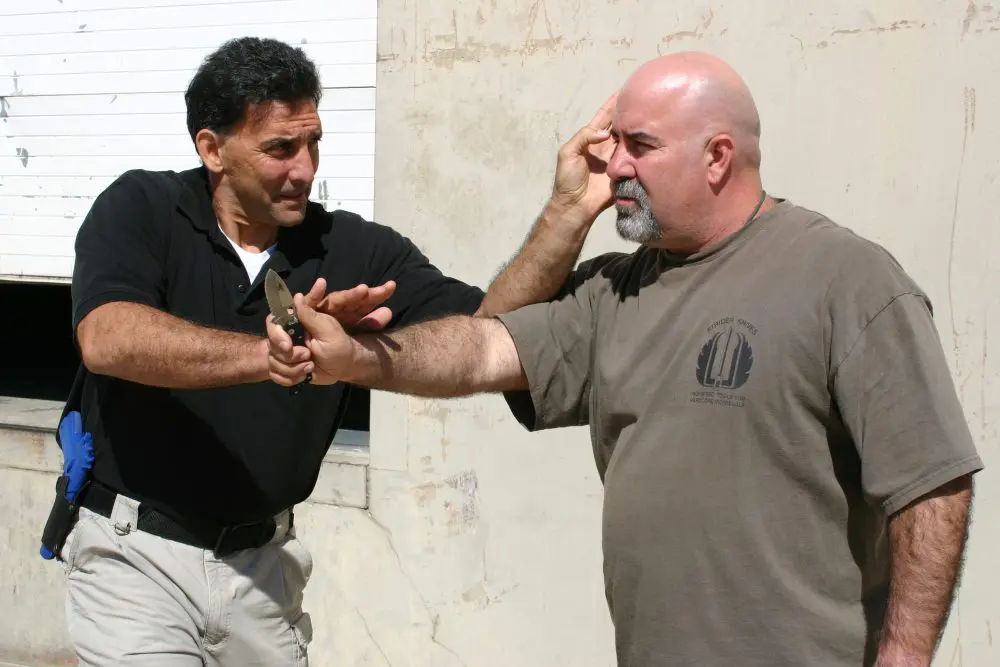


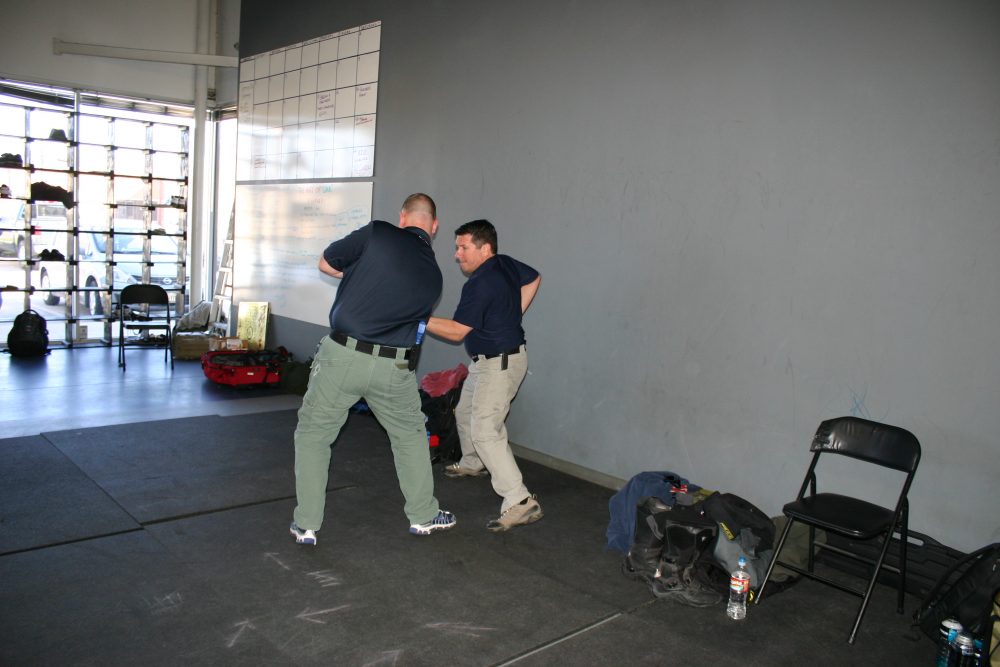
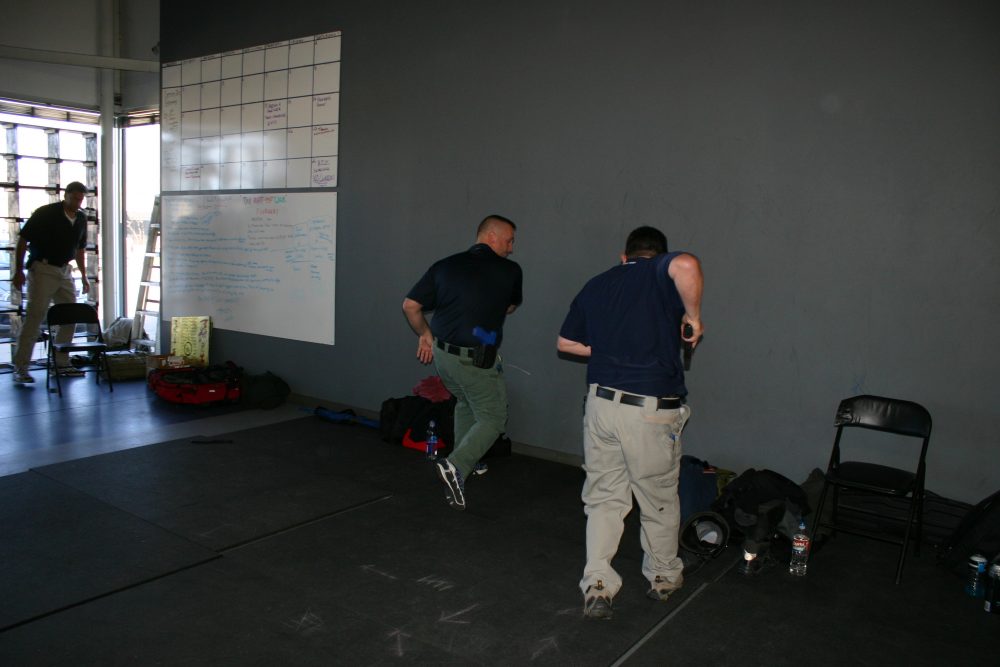
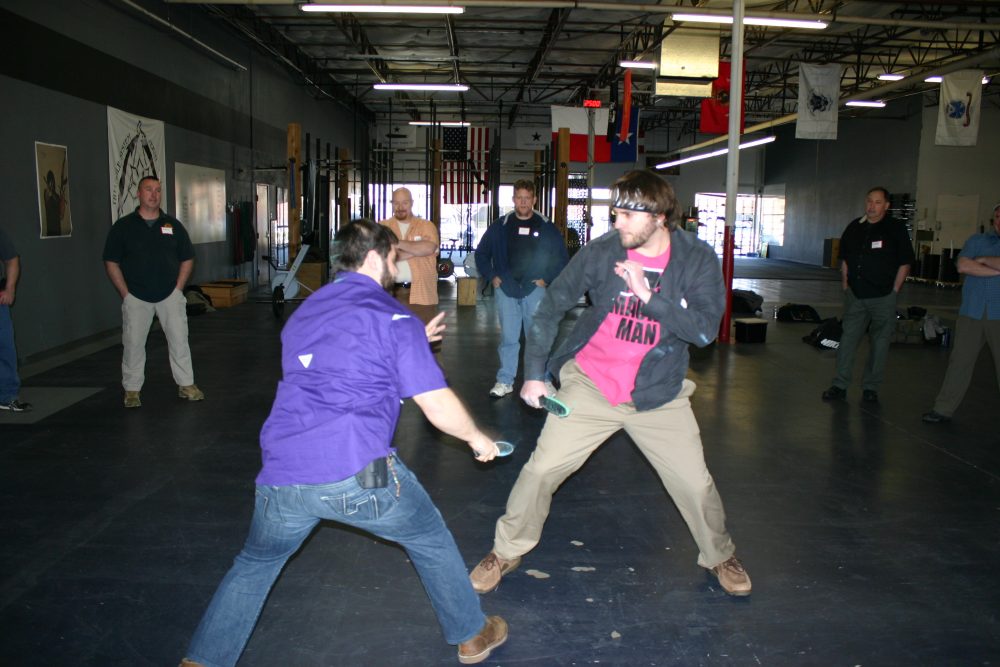
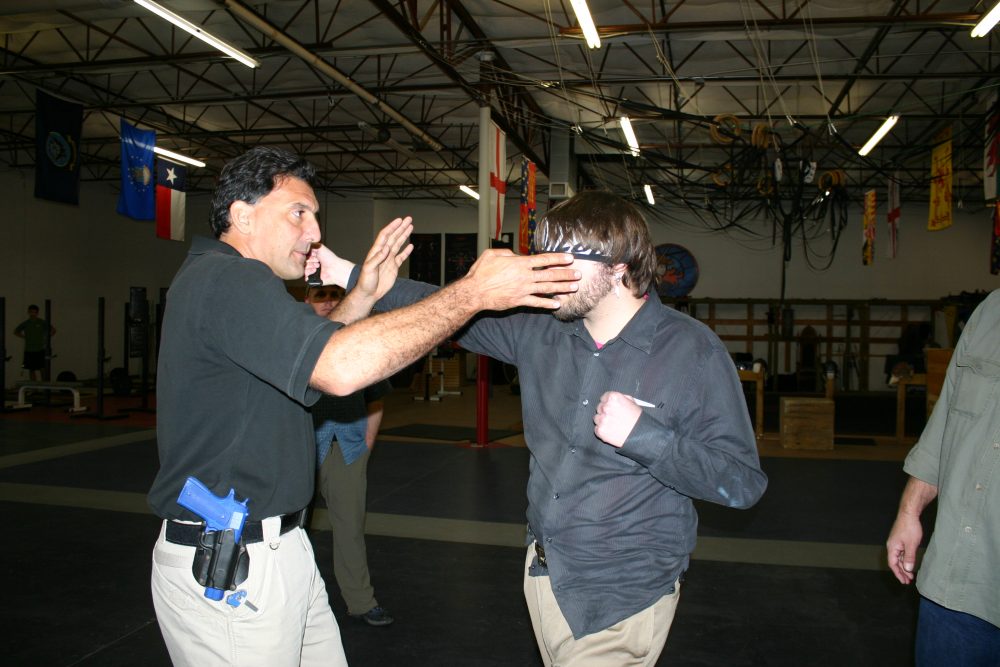
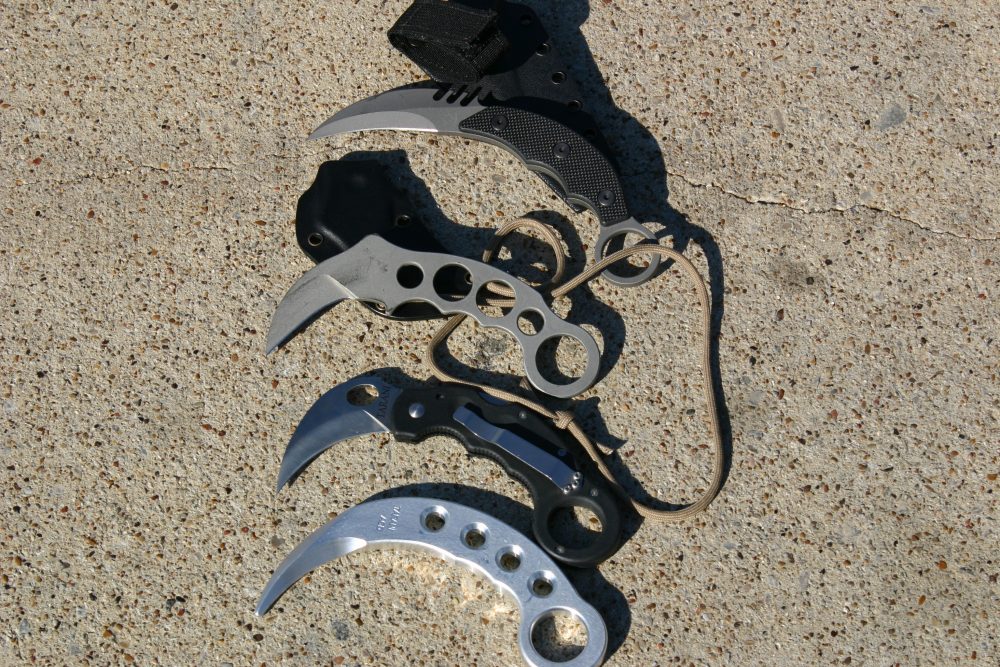
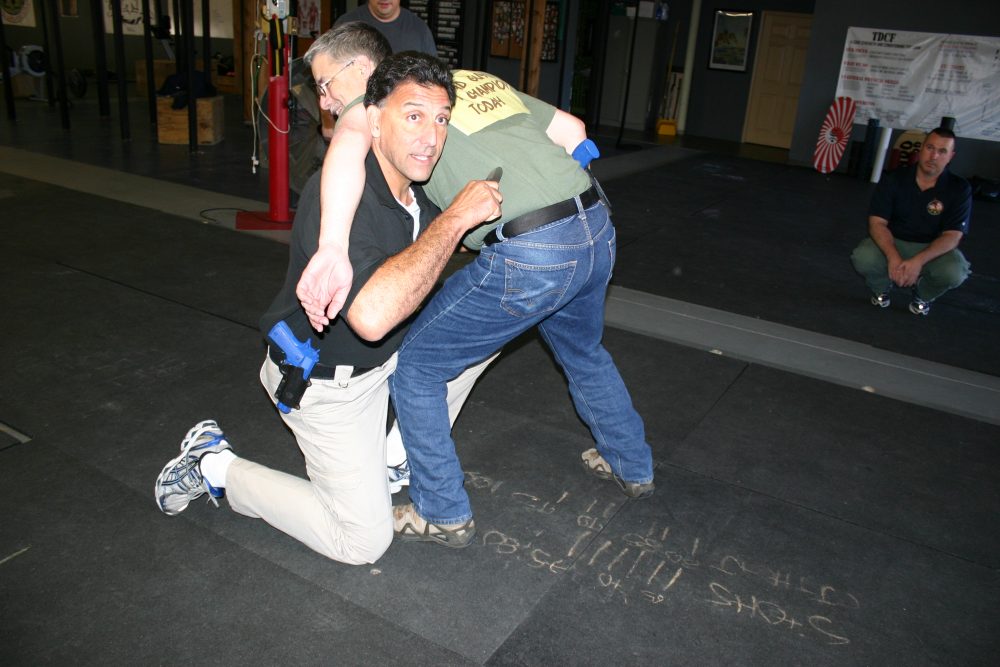
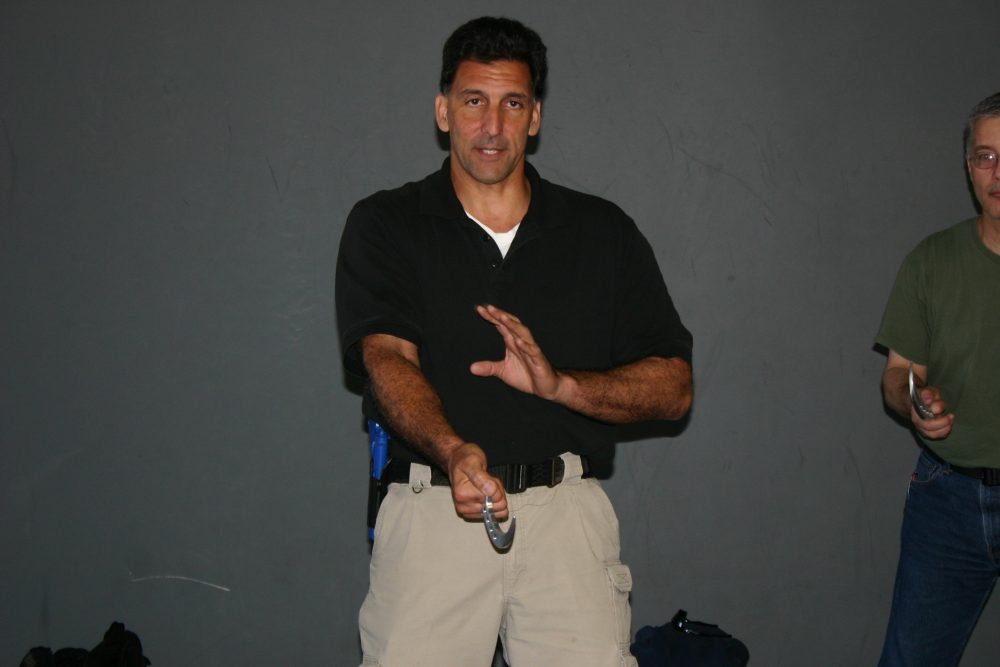
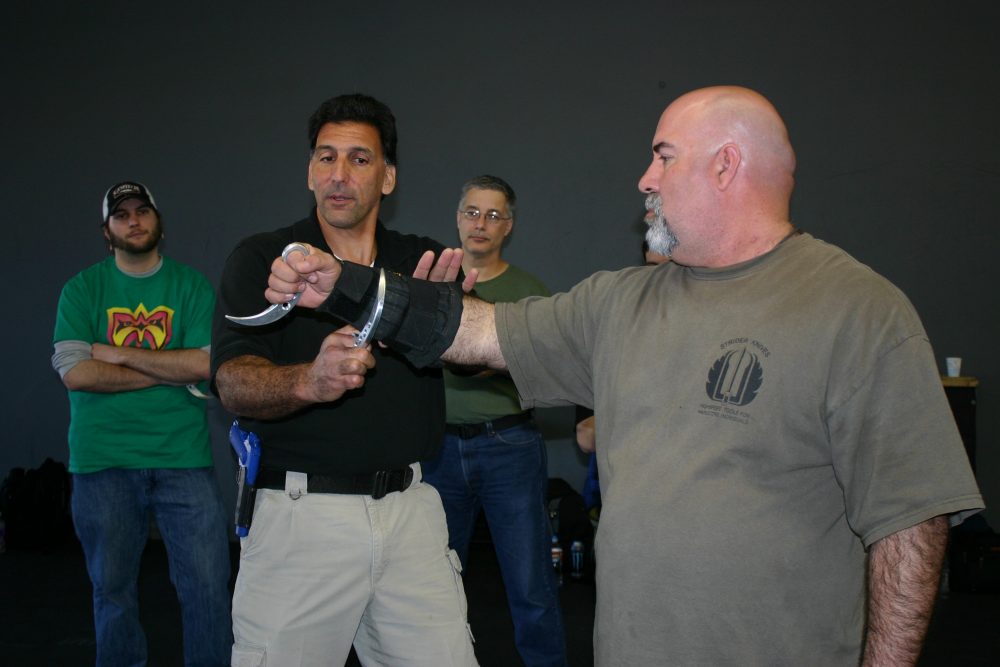
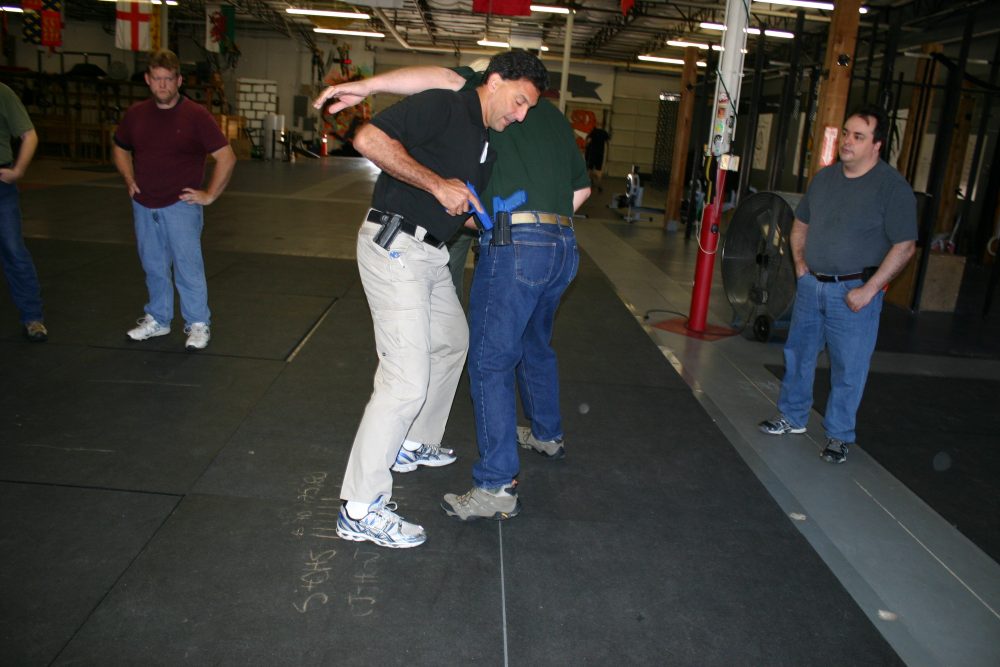

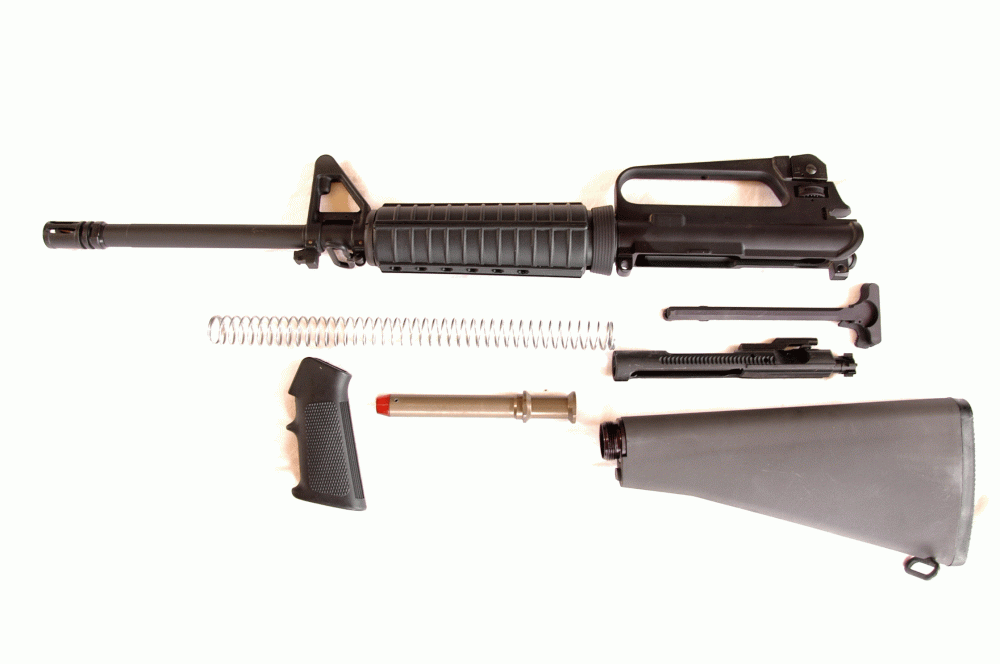

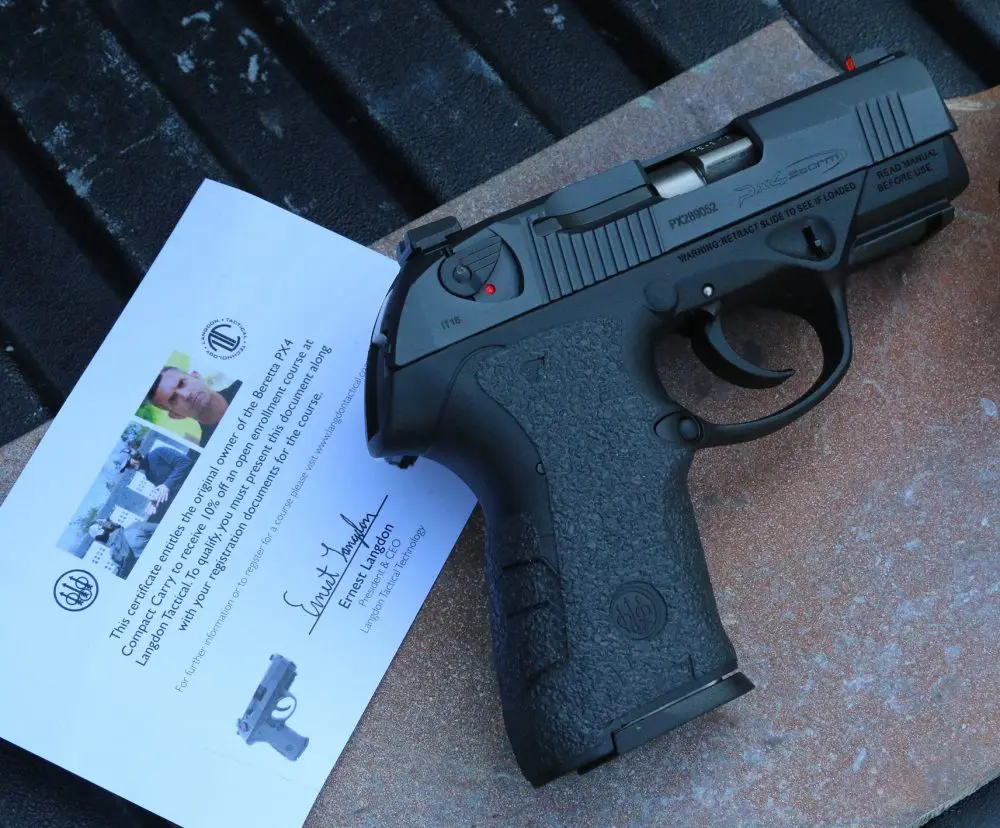
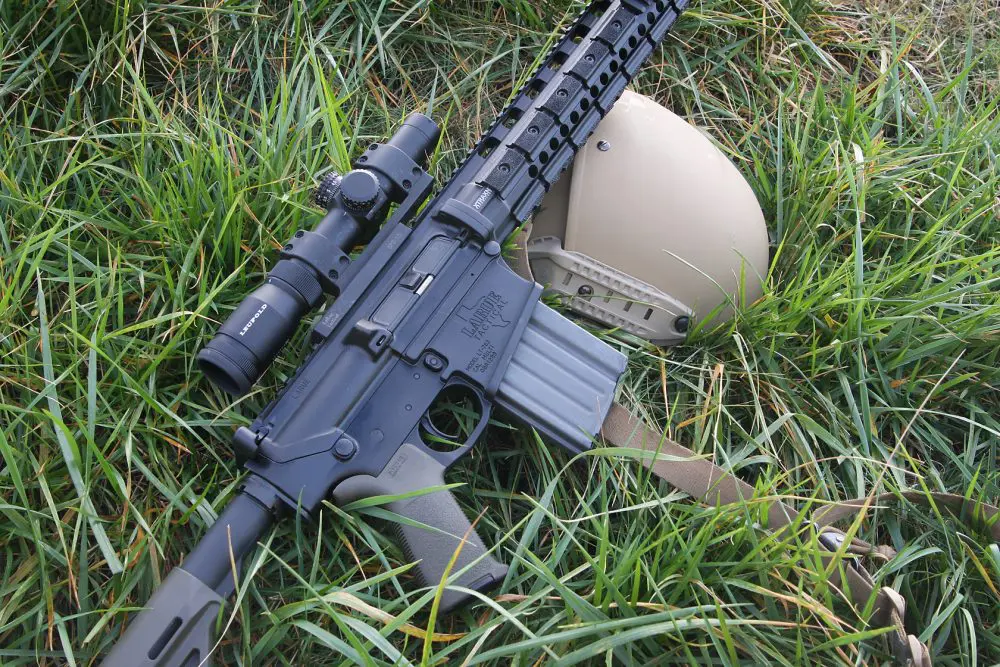
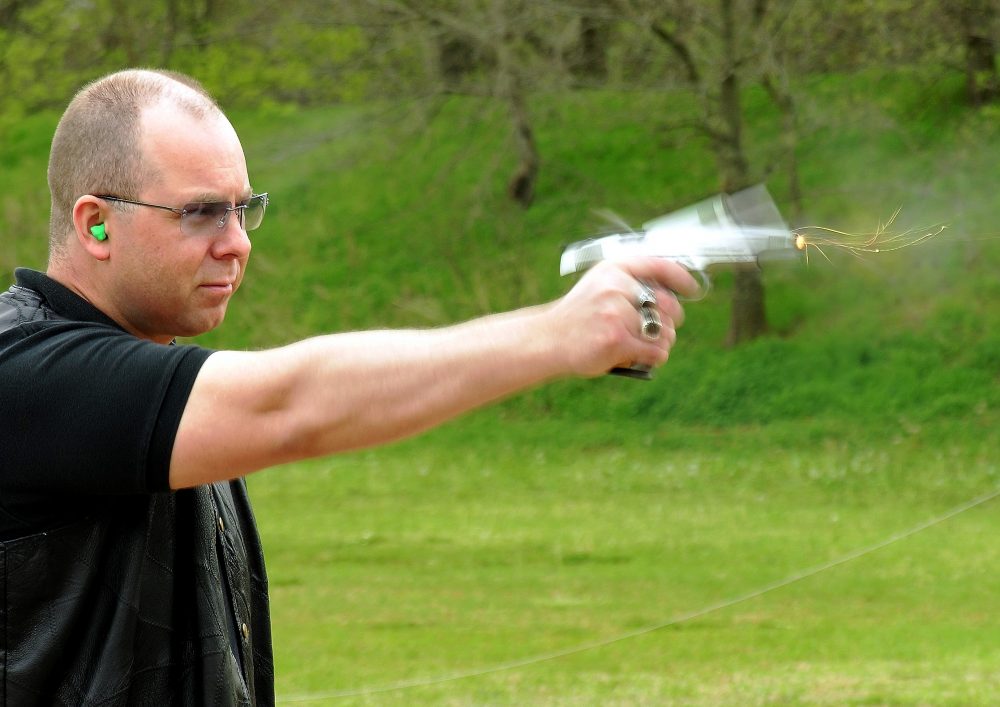
1 comment
Hi Steve do you still do seminars in the use of the Karambit if so do you ever teach in the u.k?